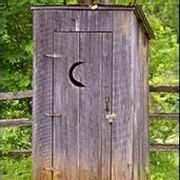Understanding 3 Crucial Components of a Septic Installation

For households that aren’t connected to a municipal sewer system, having a quality septic installation is of the utmost importance. But there’s much more to these systems than the tank itself. Here’s a closer look at the primary components that make up your system.
The Top 3 Components of a Septic Installation
1. Septic Tank
The septic tank is the most well-known part of a wastewater system and is the first place waste will go. Inside this watertight container, solid waste will settle to the bottom of the tank, while grease and oil will rise to the top. These materials are broken down by bacteria within the tank, but regular pumping is needed to prevent overflows. The remaining liquid is filtered out of the tank.
2. Distribution Box
 The liquid waste, or effluent, is then sent to the distribution box. This smaller container is used to redistribute the liquid into a series of pipes or trenches to take it away from the home. A failure to pump the septic tank could cause the distribution box to get contaminated with waste. Homeowners should also monitor the condition of the lid and other external components.
The liquid waste, or effluent, is then sent to the distribution box. This smaller container is used to redistribute the liquid into a series of pipes or trenches to take it away from the home. A failure to pump the septic tank could cause the distribution box to get contaminated with waste. Homeowners should also monitor the condition of the lid and other external components.
3. Leach Field
Water is delivered via a series of pipes into the leach field (or drainage field) where it is released underground. The soil will naturally filter out any remaining impurities, ensuring that the water that gets back into the groundwater supply is safe and clean. Homeowners should avoid driving heavy vehicles over the leach field or planting bushes or trees in the area to avoid damaging the pipes.
Whether you need a new septic installation or pumping for your old system, you can depend on Green Acres Septic Tank Service. Serving Callaway County, MO, for over 30 years, these septic maintenance experts are available with 24/7 emergency service, so you can always keep your system in top shape. To learn more about their septic services or to request a free estimate, visit them online or call (573) 529-6706.
About the Business
(22 reviews)
Have a question? Ask the experts!
Send your question

